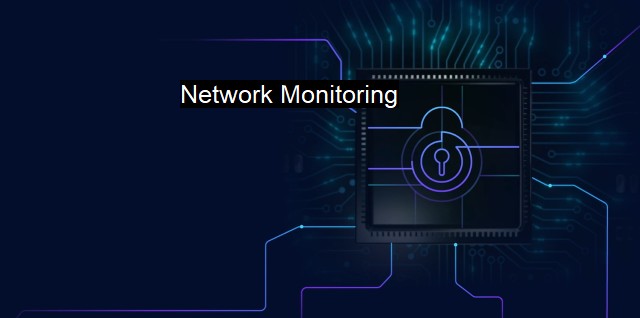What is Network Monitoring?
The Importance of Network Monitoring in Cybersecurity and Antivirus: Real-time Detection and Proactive Response to Issues and Threats
Network monitoring is a crucial aspect associated with maintaining the integrity, reliability, and security of computer networks. network monitoring is the practice of continually observing computer networks for any anomalies or failures in order to resolve them before they can impact the function of the system or breach any security measures. This practice is particularly critical given the rising incidences of major cyber threats such as malware, ransomware, and phishing that pose significant threats to the integrity and security of networks.A vital part of cybersecurity, network monitoring primarily focuses on the consistent and continual surveillance and tracking of computer networks to identify any irregularities or inconsistencies that occur. These inconsistencies might be due to network conflicts, system crashes, overloads, and malicious attempts to infiltrate the network. Proactive network monitoring allows administrators and cybersecurity teams to identify these issues promptly and take the necessary actions to rectify them, maintaining the smooth operation and integrity of the network.
Generally, network monitoring stems from the need to constantly observe and control computers, servers, switches, routers, and other components in a network. Every piece of equipment within the system has a role in the overall functionality of the network, so understanding these roles and how to monitor them is crucial. For instance, network traffic has to be monitored to identify potential bottlenecks and prevent congestion that can severely hamper network performance.
Network monitoring also offers the ability to detect potential security threats and breaches in real-time. With the aid of special network monitoring tools, unusual activity that could indicate an attempted cyber attack can be flagged, isolated, and dealt with swiftly. This preemptive detection is crucial in preventing sophisticated cyber threats that often aim to infiltrate networks without detection.
Antivirus applications play a significant role in network monitoring. These software tools are configured to scan, detect, and remove viruses and other types of malicious software. They offer a protective shield around computers and networks, barring threats from infecting the systems. Data packets traveling through the network are routinely scanned for viruses and if any malware is identified, it is immediately isolated and removed. Modern antivirus software not only deals with viruses, but also with a variety of threats such as spyware, ransomware, adware, trojans, and worms.
Seeing that networks are continuously evolving with the addition of new devices, applications, and users, network-monitoring needs to persistently adapt and evolve as well. In this sense, the duties of network monitoring extend beyond simple problem diagnosis and resolution, to include responsibilities such as evaluating network usage trends, planning future enhancements, and ensuring that the network has capacity to handle increased loads and resources.
Network monitoring is an essential feature in the domain of cybersecurity and antivirus. It involves constant oversight of internal operations, data flow, network elements, and the overall wellbeing of a network. Its primary purpose is to ensure constant efficiency, reliability, and security within the network system. While antivirus software provides an added degree of coverage, mediating threats before they infiltrate the network, network monitoring allows complete visibility into a network's performance and health. Together, these tactics create an effective layer of protection for networks, allowing organizations to protect their critical digital assets and data from a myriad of cyber threats.

Network Monitoring FAQs
What is network monitoring?
Network monitoring is the process of supervising and analyzing data traffic that flows through a computer network. By monitoring network activity, administrators can identify and resolve issues, ensure network security, and optimize network performance.How does network monitoring contribute to cybersecurity?
Network monitoring provides a proactive approach to cybersecurity by allowing administrators to detect and respond to cyber threats in real-time. It also helps identify vulnerabilities in the system, highlights suspicious activity, and enhances incident response capabilities.What are the benefits of using network monitoring for antivirus protection?
Network monitoring can help identify and block malicious traffic and malware from accessing the network. It can also provide real-time alerting on virus outbreak, allowing administrators to take immediate action. Network monitoring can also provide visibility into endpoint activity and identify unauthorized software installations or updates.What are some of the key features to look for in a network monitoring tool for cybersecurity?
Some of the key features to look for in a network monitoring tool for cybersecurity include real-time monitoring and alerting, network map visualization, log analysis, packet capture and analysis, and integration with antivirus and other security tools. It is also important to consider scalability, ease of use, and flexibility of the tool to meet specific needs.| | A | | | B | | | C | | | D | | | E | | | F | | | G | | | H | | | I | | | J | | | K | | | L | | | M | |
| | N | | | O | | | P | | | Q | | | R | | | S | | | T | | | U | | | V | | | W | | | X | | | Y | | | Z | |
| | 1 | | | 2 | | | 3 | | | 4 | | | 7 | | | 8 | | |||||||